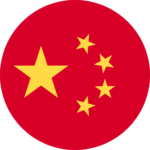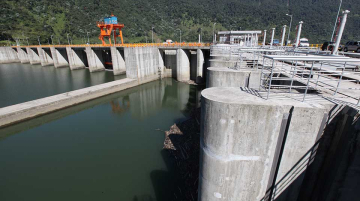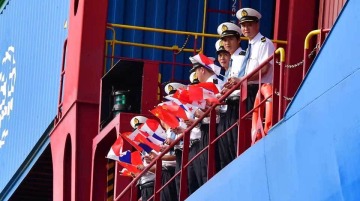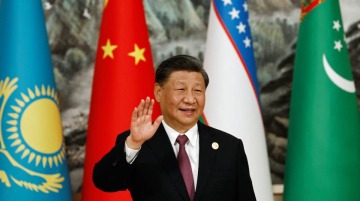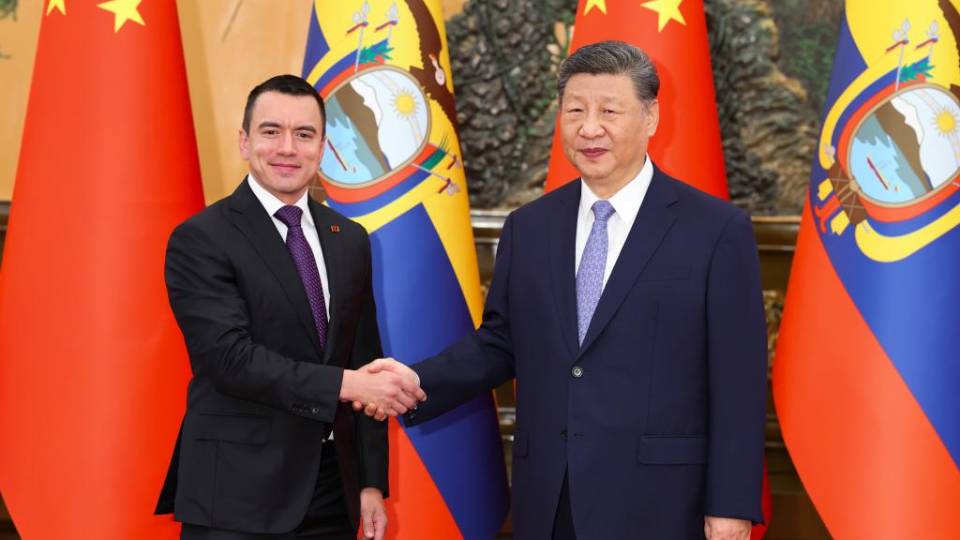
With a tightening fiscal clock and the weight of geopolitical balancing on his shoulders, Ecuadorian President Daniel Noboa touched down in China last week with more than just a forum appearance on his agenda. His trip to the 2025 Summer Davos Forum in Tianjin doubled as a high-stakes diplomatic mission; one aimed at buying time on Ecuador’s looming debt obligations and securing new economic lifelines.
The visit coincided with the 45th anniversary of Ecuador-China diplomatic ties. According to a Chinese Foreign Ministry spokesperson, Noboa met with Xi Jinping to deepen the China–Ecuador strategic partnership, focusing on trade, technology, culture, education, and youth.
But for Noboa, the priorities were far more immediate: restructuring debt, improving financing terms, and expanding bilateral trade. China is Ecuador’s second-largest trading partner, with a Free Trade Agreement in place since 2024, and a major lender, especially in infrastructure projects.
Debt, Deadlines, and Diplomatic Calculations
Noboa’s visit marks the latest chapter in Ecuador’s recurring efforts to restructure the country’s debt with Chinese creditors.
According to Ecuador’s Ministry of Economy, the country’s current debt with China is close to 2.5 billion dollars. This represents a significant reduction from the 5 billion dollars previously owed, which had been restructured in 2022 under then-president Guillermo Lasso.
Chinese banks such as the Bank of China, the Chinese Development Bank, and the Export-Import Bank of China now hold less than 10% of Ecuador’s total sovereign debt—which seems good at first glance.
However, Lasso’s deal delayed $1.4 billion in repayments until 2025, extended debt maturities to 2027 and 2032, lowered interest rates, and used Ecuadorian crude as collateral. Yes, Lasso’s decision was key to preventing a financing gap of nearly 3 billion dollars. But it also created a deadline that Noboa must now address. As he put it, Ecuador needs “more public works, greater social assistance, and free space in the budget to generate economic growth”—all of which hinge on another round of restructuring.
The trip also had multilateral implications. The International Monetary Fund (IMF) provides significant funding to Ecuador, primarily through an Extended Fund Facility. Given China’s growing influence within the IMF, Ecuador’s Foreign Minister, Gabriela Sommerfeld, stated that the country would seek Beijing’s support in maintaining the assistance, and that Ecuador will not rule out asking for further financing from China if the IMF decides to discontinue its funding to the country.
Investment Promises and Infrastructure Pains
As an immediate result of Noboa’s visit to Beijing, a government spokesperson announced that Power China will invest 400 million dollars in renewable energy projects and their storage. Power China is the parent company of the Chinese engineering firm Sinohydro, which built Ecuador’s Coca Codo Sinclair Dam—a project plagued by construction flaws and is causing environmental degradation at the site. Financed by the Export-Import Bank of China, the dam was part of a controversial oil-for-loans deal, with Ecuador repaying debt via discounted crude shipments, as The New York Times has reported. Ecuador is currently seeking damages through arbitration with Sinohydro.
Another important development that came out of the Xi-Noboa meeting was the announcement that China and Ecuador were signing a cooperation plan for promoting the Belt and Road Initiative. Ecuador joined the BRI in 2018 and associated projects have focused mainly on hydropower and infrastructure.
Though the plan’s details remain undisclosed, it appears connected to the China-CELAC Forum. Xi used the occasion to call for the implementation of outcomes from the forum’s fourth ministerial meeting, suggesting renewed efforts to revive BRI momentum in Latin America, particularly after Panama’s withdrawal and Colombia’s recent entry.
Between Superpowers
Noboa’s trip is not a shift toward Beijing, nor a break from Washington. Rather, it is emblematic of what most countries in the Global South (and especially the ones from Latin America and the Caribbean) are struggling with: effectively tackling their most pressing political and socio-economic issues without having to pick a side.
Nonetheless—as Ecuador also demonstrates—in practice, most of these countries are (at least temporarily) de facto aligned with the superpower that provides them with the most immediate relief. In an age of strategic competition and regional fragmentation, a growing number of countries are opting for de-risking and diversification, expediency, and a more transactional approach to their international relations. Call it active non-alignment or multi-alignment, the Ecuadorian example demonstrates that this trend is here to stay.
Alonso Illueca is CGSP’s Non-Resident Fellow for Latin America and the Caribbean.

